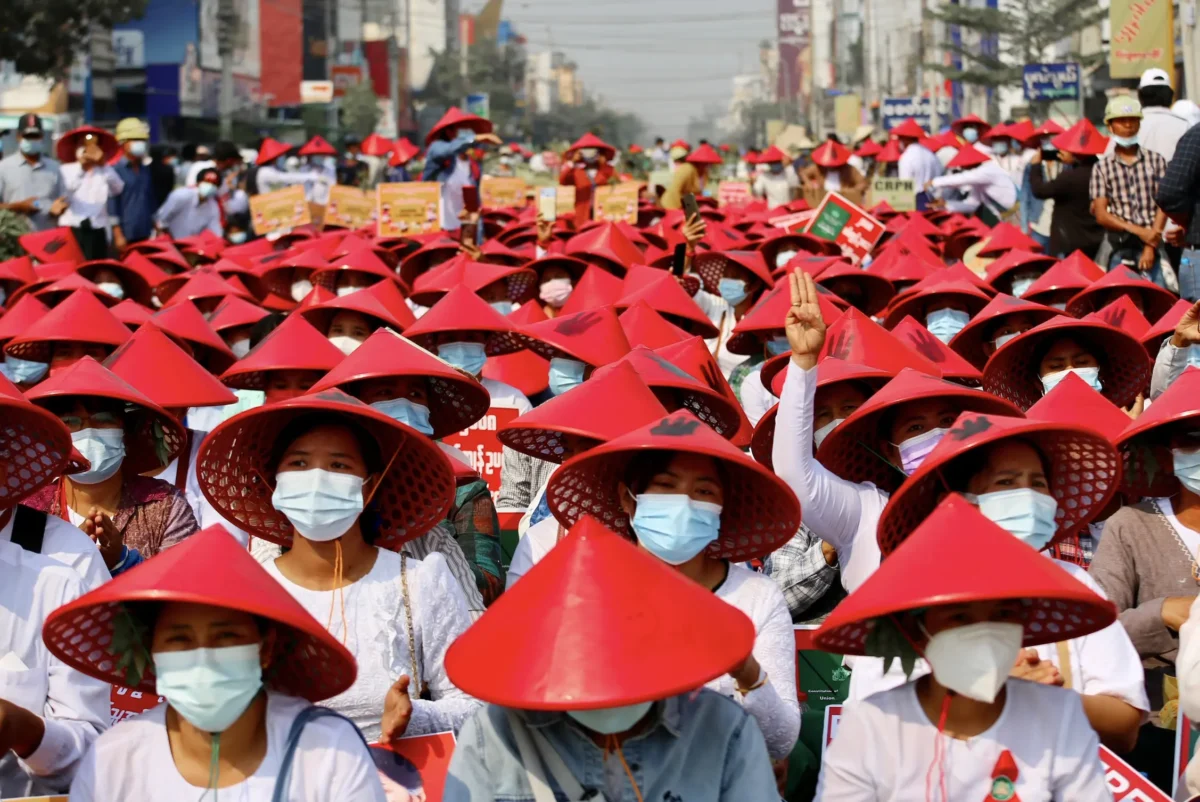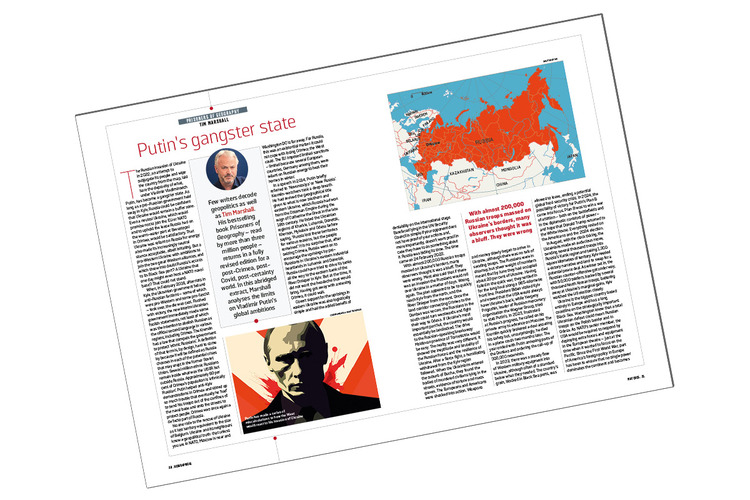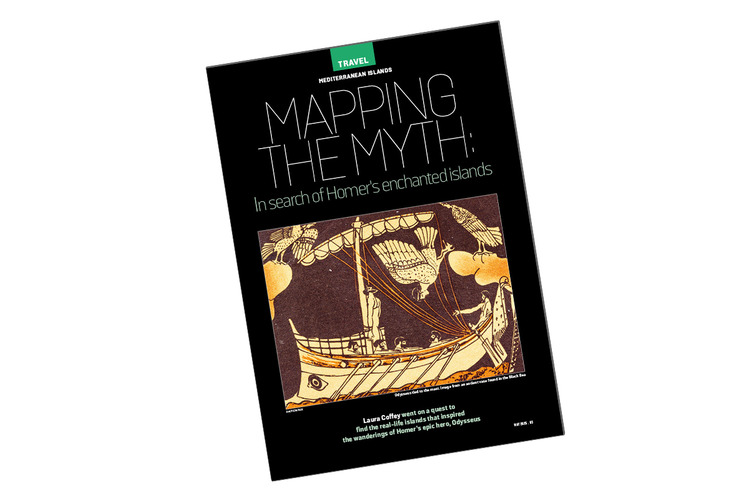
From the devastating impacts inflicted upon Myanmar to the reshaping of global commerce, join us with Geographical’s May issue, out now…
In our May issue, discover how Myanmar is being torn apart by a civil war, compounded by the devastation wreaked by the earthquake in March; read about the changing patterns of global trade that are having a bigger impact than tariff brinkmanship and head to New Zealand to uncover the fascinating story of revitalising bird life in the capital.
For literary lovers, dive into an interview with travel writer Geoff Dyer on the overcrowded tourist spots around the world – and why the Earth is still worth wandering. Stuck on a book to read? Our reviews are sure to pique your interest – from the geography of monsters to how catastrophes formed our world.
Our columnists help you stay on top of the world: Marco Magrini considers the climate consequences of a dimming planet, while Tim Marshall discusses the limits of Vladimir Putin’s global ambitions in an extract from the fully-revised edition of his bestselling book, Prisoners of Geography. Andrew Brooks examines how geographers must continue to challenge false ideas and develop new, truthful theories.
Join Danish adventurer Thor Pedersen as he visits every country in the world in one unbroken journey, without using aeroplanes. On the same note of exploration, Rory Walsh crosses the Irish Sea to visit unique landforms shaped by water, while Tristan Kennedy steps into spring through nature hiking.
This month, Geographical ‘s cover story takes us to the brutal reality of life in Myanmar. As the ongoing humanitarian crisis continues, discover more about the country in an interview with one Burmese woman, Taurus, recounting the unrelenting trauma experienced in the last four years.
In the wake of Trump’s tariff announcements, Mark Rowe asks if such tariffs may cause the world to rethink its ability to connect – and how trade powers could be altered in the future.
Our digital edition is out now, and you can not only read all the great stories in that issue, but our app also gives you access to our full archive dating back to 1935 with hundreds of magazines to explore. And if you want to enjoy our beautifully designed and produced print magazine, we can post the next edition to you anywhere in the world. Join us and stay on top of the world!
The transforming landscape of global trade

Global trade is shifting – and not just because of tariffs. While Trump’s latest volley of import taxes grabs headlines and rattles markets, the real transformation is happening beneath the surface. The traditional axis of trade, long dominated by the West, is being steadily eroded. In its place, a more complex, multipolar landscape is emerging: one driven by the ambitions of rising economies in Africa, Asia and Latin America.
South-to-south trade is on the rise, with countries forging new regional alliances and bypassing traditional economic gatekeepers. Meanwhile, north-to-north trade – once the backbone of the global economy – is in decline. China is now the largest trading partner for 120 countries, its Belt and Road Initiative having rewired entire continents. Africa, buoyed by a growing population and new intra-continental agreements, is stepping into a central role. And middle-income nations like Turkey and Indonesia are navigating an increasingly volatile landscape by diversifying their trade ties and asserting greater independence.
In this insightful feature, Mark Rowe examines the structural forces reshaping global commerce. What happens when trade blocs fragment, supply chains splinter, and tariffs become weapons of diplomacy? Can nations still thrive in a world where the rules are constantly being rewritten?
With protectionism rising and multilateralism under strain, the question is no longer who trades the most – but who controls the terms. Is this just another pendulum swing, or are we witnessing the birth of a radically different global order, where influence is dispersed and no one power dominates the market?
Unpicking Putin’s global ambitions

Russia’s war in Ukraine wasn’t just an invasion – it was a miscalculation. In this exclusive extract from the newly updated Prisoners of Geography, Tim Marshall unpicks Putin’s obsession with borders, buffer zones, and the myth of ‘New Russia’. What began as a swift land grab turned into a brutal slog, exposing not just military shortcomings but deepening cracks in Russia’s global strategy.
Gas and oil were meant to freeze Europe into submission. They didn’t. Now, cut off from its most lucrative markets and increasingly dependent on China, Moscow’s grip is weakening. But the map is still volatile. From Moldova to the Suwałki Gap, new flashpoints are emerging. Could the Baltics be next? Would NATO hold? And what happens if Trump returns to the White House?
Marshall – as ever – connects the dots between history, terrain, and power, showing how geography continues to shape the future of conflict.
Retracing Homer’s footsteps across the world

The Odyssey is a story of monsters, shipwrecks and gods, but what if it’s also a map? In Mapping the Myth, Laura Coffey sets sail through the Mediterranean in search of the real-world locations that may have inspired Homer’s enchanted islands – from the volcanic glow of Stromboli to the tranquil shores of Marettimo and Menorca. Ancient scholars believed these places held echoes of epic adventure. Today, scientists and classicists still argue over every cave, current and coastline, piecing together centuries-old clues with poetic fragments and geographic guesswork.
But this isn’t just a literary treasure hunt. It’s about the way myths settle into landscapes – how old stories leave traces on real places, and how those places start to tell the stories back. Coffey isn’t just looking for Odysseus’s route; she’s asking what it means to try. Because maps aren’t only about directions – they’re shaped by memory, desire, belief. They tell us what we value, what we fear, what we’ve chosen to remember. So can we really plot a myth? Or are we just sketching our own hopes across the sea, looking for meaning in the gaps?
Is Everest becoming overcrowded with tourists?

Seventy years after Hillary and Norgay’s historic climb, Everest is buckling under the weight of its own popularity. Our latest Geo-Graphic uncovers the ultimate test of human endurance, with long queues to the summit and piles of rubbish strewn along the way. The so-called ‘world’s highest junkyard’ isn’t just a metaphor anymore.
This year, Nepal is trying to fight back. New regulations will cap climbing permits and raise peak-season fees to an eye-watering US$15,000. But will it work? With climbers already shelling out six figures for a shot at the summit, the price of prestige might still be too tempting to resist.
Compounding disasters in Myanmar

Myanmar is at war with itself – and nature. In March, the country was rocked by its most powerful earthquake in over a century. Homes crumbled, hospitals collapsed, and landslides ravaged the mountains. But with the country already four years deep into a brutal civil war, the disaster struck a nation already on the brink.
Stuart Butler reports from the frontline of a failed state. Since the military coup of 2021, Myanmar has spiralled into chaos. The junta controls little more than a third of the country, while a patchwork of rebel armies and the shadow government – the National Unity Government – control the rest. Airstrikes continue even in the wake of catastrophe. Over 6,000 civilians have been killed since the coup. More than 21,000 political prisoners remain behind bars. And now, compulsory military service for young men and women is driving mass flight from the cities.
Through the eyes of Taurus – a Yangon woman whose family was torn apart by a military raid – Butler witnesses the human cost of repression.
Myanmar’s civil war isn’t just about politics. It’s about identity, economics and power. From the deadly crackdown on the Rohingya to battles over rare earth mines in Kachin State, this is a conflict with regional and even global consequences. As Butler writes, the fighting is fracturing an already fragile society. But amid the rubble, there are moments of resistance, survival and the faintest flickers of hope.




